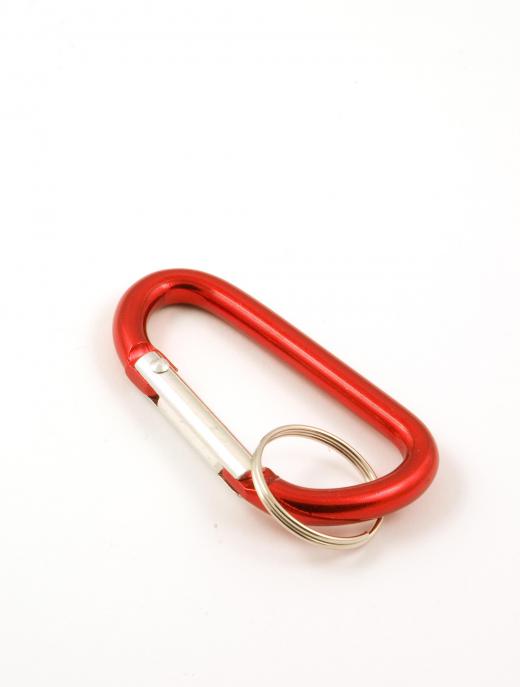A D-ring is a piece of hardware that is shaped like the letter D. It is used as a hooking device in most cases, and it is sometimes attached to the end of a strap, chain, cable, or rope. The vertical part of the D-ring is often removable so the unit can be mounted at various points, though in many cases this part is fixed to the rest of the unit. The ring itself may be affixed to a solid surface with a bolt, or it may even be welded down. These pieces of hardware are very often used in industrial settings or as part of a tie-down system.
The materials used to make a D-ring can vary depending on the intended application of the piece. A plastic D-ring can be used for light-duty applications. Plastic rings can often be found on luggage, backpacks, or other carrying cases to allow attachment points or tie-downs. Steel D-ring units are usually used for heavier-duty applications, and they are common in industrial settings such as factories, warehouses, or even construction sites. Some pickup truck beds feature D-rings to act as tie-down points at various locations within the bed. They are most often located at the four corners of the bed for convenience.

One exceptionally useful type of D-ring is the trailer hitch model. In this case, the ring itself is only one component of the system. A load bar slides into a receiver hitch mounted on a vehicle, and the ring is attached to the outer end of the load bar. This system is useful for pulling or hauling items over a short distance, though it is not recommended for long-term towing, especially on roads. A rope or strap can be secured to the ring, and the other end of the rope or strap can be secured around the item to be hauled.
An alternative type of D-ring is the carabiner, which is primarily used for rock climbing. This device features a spring-loaded gate that can snap shut to prevent a rope from sliding out of the D. Some gates even lock down to prevent the gate from opening at all unless the user unlocks it. Various sizes, weights, and styles of carabiner exist for different purposes within the climbing world. These devices have become popular in other settings as well, especially in other outdoor activities such as backpacking or camping. Some carabiners are designed for bearing weight, while others are designed more for fashion or exceptionally light-duty applications.
